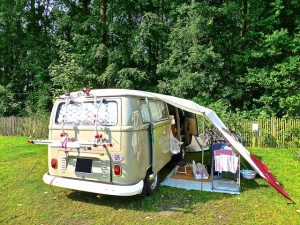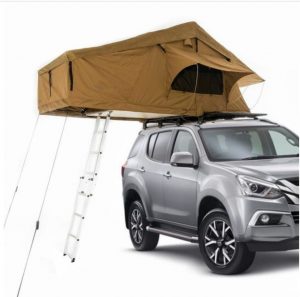Campervan Conversions And #VanLife

It’s perfectly possible to sleep in the back of most cars in a pinch, as long as the rear seats fold flat and you have a reasonable bit of padding underneath you and a pillow (speaking from experience here). However, I wouldn’t want to do it for more than a night or so in a row without very good reason. If you like to stay in campgrounds or in the middle of nowhere but don’t want to lug around a caravan, then possibly the answer is to build your own campervan, giving you more versatile motoring as well as the ability to take secure accommodation with you – and making it easier to find a park when you stop in to pick up supplies.
If you want to convert a vehicle to a campervan, you need to start with the right one. Vans are always popular and give you more floorspace and headroom in your mobile bedroom, but it’s also possible to convert a sizeable SUV or MPV.
Good vans for converting to a campervan include:
- Mercedes Sprinter (a popular choice for many enthusiasts)
- Ford Transit
- Fiat Ducato
- Toyota Hiace
- Hyundai iLoad
- VW Crafter
- VW Kombi – the classic retro campervan!

Good SUVs and MPVs for conversion are:
- Toyota 4Runner
- Toyota Estima
- Honda CRV
- Honda Odyssey
- Skoda Octavia
In fact, any decent-sized SUV or van or MPV can be converted into a campervan. Even some utes with a covered deck can be used as campervans. Some can even be converted into full legal motorhomes, as long as you meet the standards.
The simplest way to convert your vehicle into a campervan is simply to fold down the back seats, then toss in a mattress, a butane stove and some picnic plates, and you’re good to go. You may also be able to even remove the rear seats completely, although whether you can do and have a legally roadworthy vehicle will depend on which state you’re in.
Assuming that you can remove the rear seats permanently (or at least until your holiday’s over), then you can go one step further and build a bed platform, which will avoid the problem of weird niggly bumps under the mattress that will make you realize where that folk tale of the Princess and the Pea came from. The advantage of a bed platform is that you can store stuff under it (like your clothes and your cooking gear).
If you want more than a place to sleep and a place to stash clothes and food, then you can add all sorts of things. LED fairy lights and rechargeable batteries have made lighting a lot easier than it was when I was in my 20s, so don’t worry about installing fancy lights unless you’re super-keen. The upgrade that a lot of people like to go for is a loo of some sort; in fact, if you’re a New Zealander reading this, you have to have some sort of loo on board to get certification as a freedom camper. I’d add curtains as one upgrade, as cars and vans are usually built for visibility, which means that when you’re trying to sleep or get dressed inside the van, you’re still exposed to the outside world. Even if you are in the middle of nowhere and get changed in the dark, the light of the rising moon can still wake you up in the wee smalls (although an eye mask or a beanie pulled over your eyes can do the trick).
Ultimately, exactly what you want to put into your vehicle to convert it to a campervan will depend on what you want to do with it and how long you’re going to be doing it for. If you are currently without a permanent home and living the van life, like one of my nieces did, then something larger will make your life more comfortable. The big thing to remember, as with any DIY project, is to measure first and play around with squared paper (or a computer-aided design tool if you know how to use one) before you head down to Bunnings and start cutting up the timber.
To be legally classed as a motorhome in Australia, the vehicle has to be fitted with seats and a table, which need to be fixed (although fold-down tables are legit); storage (fixed), somewhere to cook (also fixed) and somewhere to sleep, which also – you guessed it – needs to be fixed. It also needs good ventilation and a fire extinguisher, and you need to stick with the weight restrictions for the class of vehicle. If you want to add anything fancy involving electricity, water or LPG gas, then this needs to be professionally installed and certified for your own safety as well as to meet the requirements. You can read the full requirements here.
You can also take the easy option and simply add a rooftop camper to a ute or 4×4, which takes out a lot of the hassle of cutting, measuring and shocking the neighbours by what you say after hitting your thumb.
